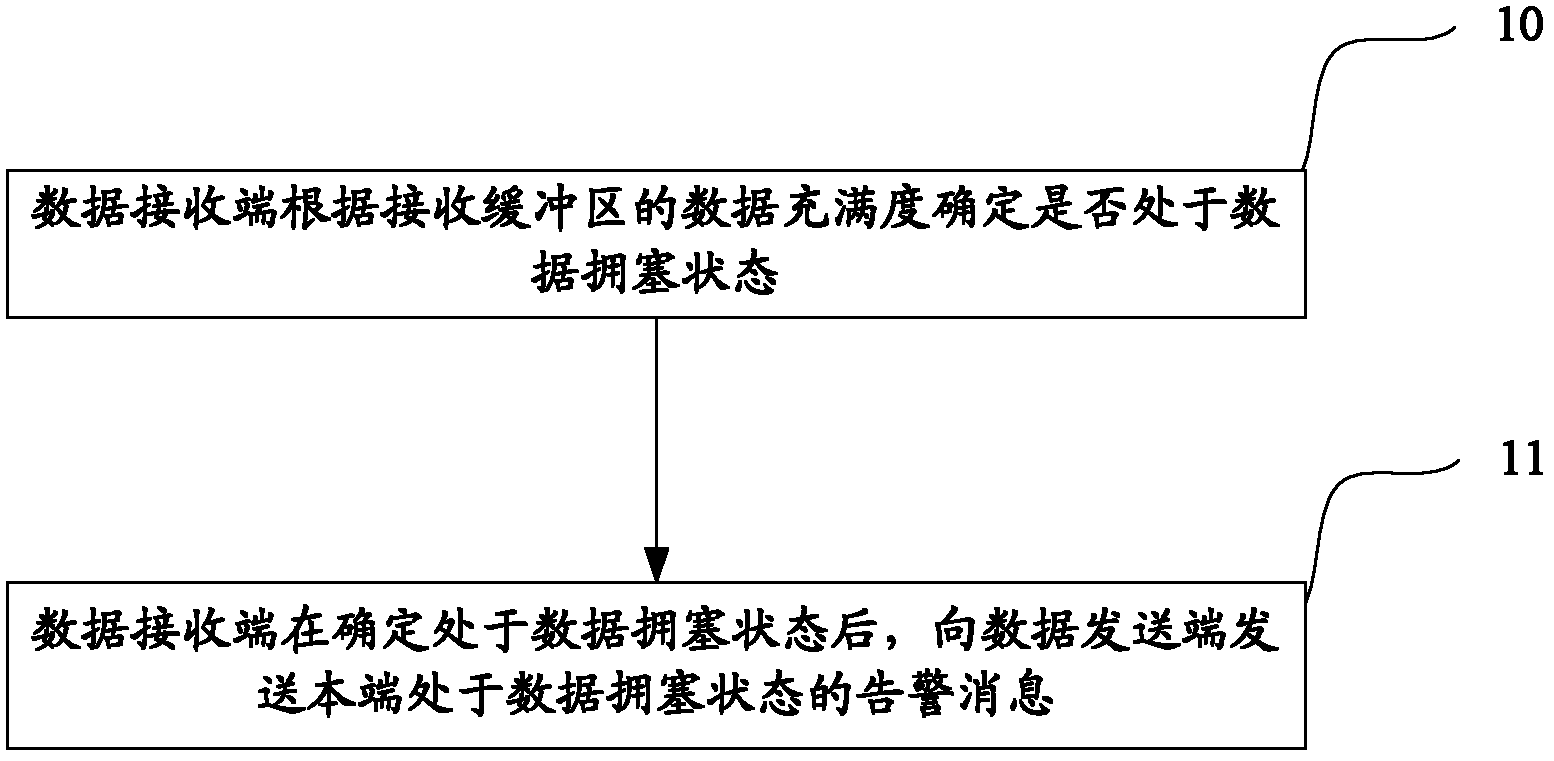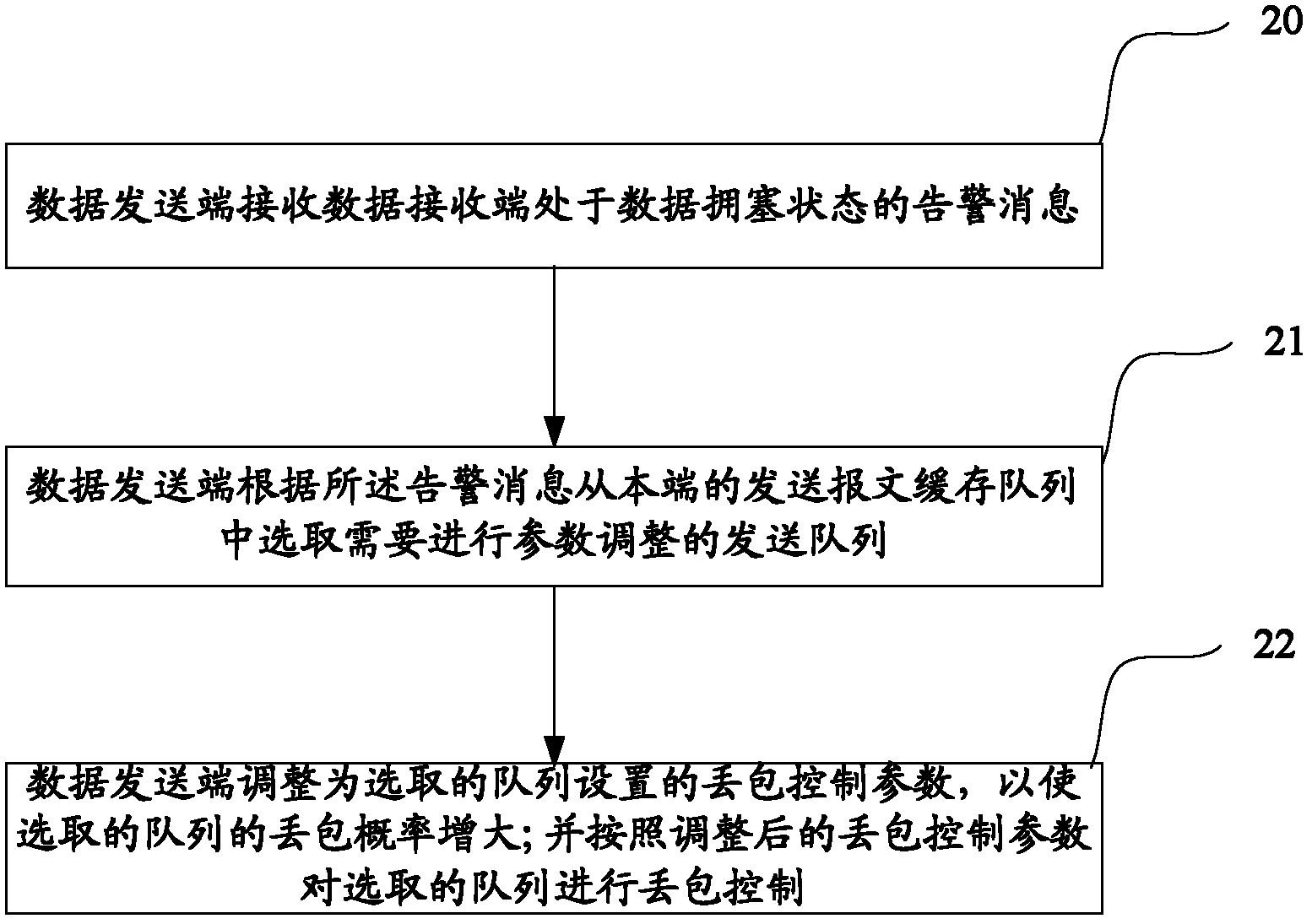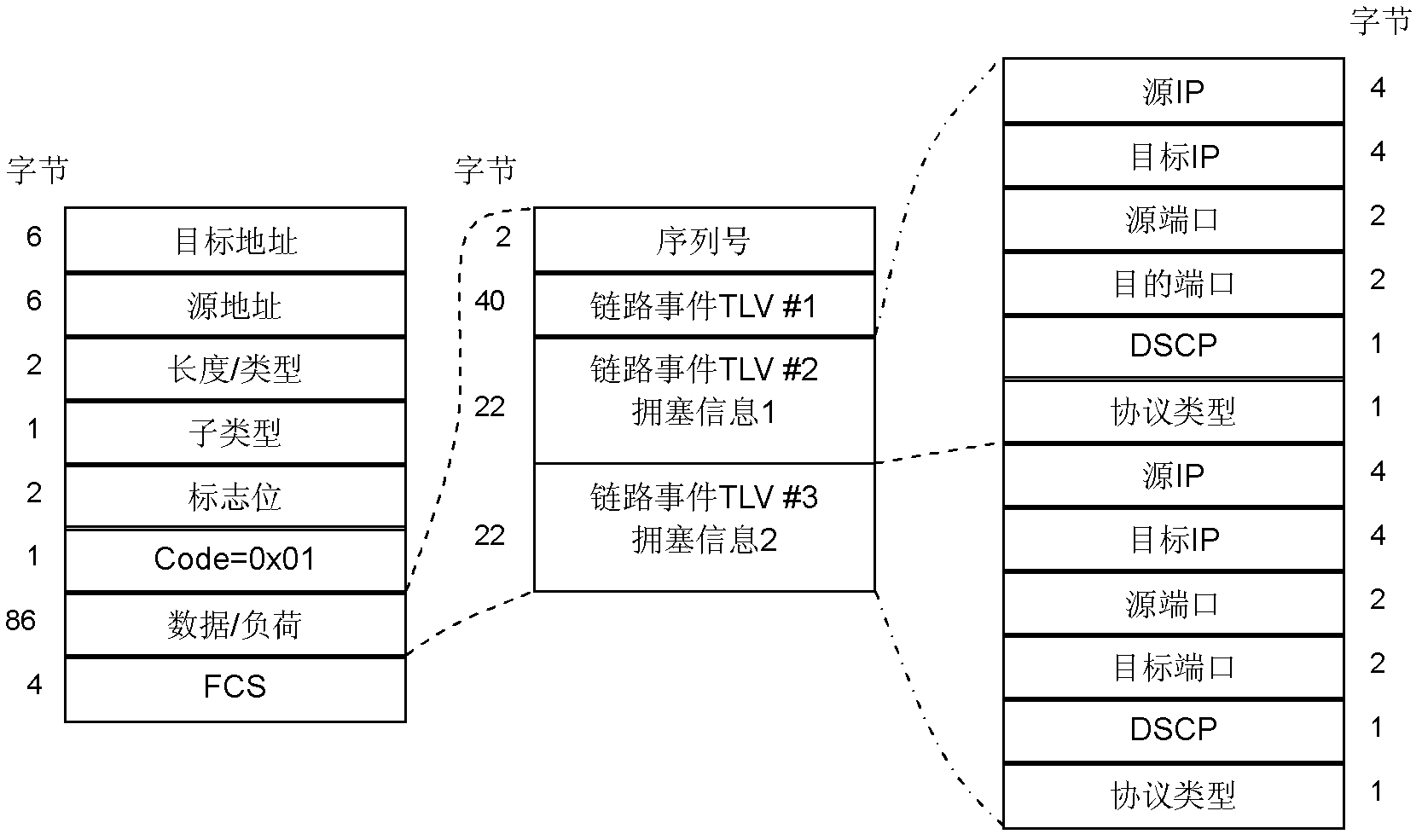Method, system and equipment for alarming and processing congestion
A technology of equipment and congestion state, applied in the field of wireless communication, it can solve problems such as damage to service quality of service, link rate oscillation, data congestion, etc.
- Summary
- Abstract
- Description
- Claims
- Application Information
AI Technical Summary
Problems solved by technology
Method used
Image
Examples
Embodiment 1
[0141] The data receiving end monitors the congestion status of the system, judges that it is congested, constructs an OAMPDU message, and notifies the data sending end to process it. Such as Figure 3B As shown, the alarm sending process of the data receiving end is as follows:
[0142] P1: Device power-on initialization, configure QOS parameters such as queue and DSCP according to static parameters, configure 802.3ah alarm messages according to static parameters, configure congestion threshold, burst congestion threshold and timers T1, T2, and T3 according to static parameters.
[0143] P2: Start the scan timer T1, start to periodically scan the fullness of the receiving buffer, and cache the latest two scan results. Compare the latest scanning result with the congestion threshold. If the scanning result is not greater than the congestion threshold, continue to perform periodic scanning. If the scanning result is greater than the set congestion threshold, enter the next pro...
Embodiment 2
[0148] The data sending end receives the OAMPDU message sent by the peer end, parses the message structure, and selects multiple queues from the local end queue for parameter adjustment. Such as Figure 3C As shown, the data sender queue selection process is as follows:
[0149] P1: The device is powered on and initialized, and QOS parameters such as queue and DSCP are configured according to static parameters, and 802.3ah alarm messages are configured according to static parameters.
[0150] P2: The queue selection module receives the Event Notification OAMPDU alarm message, parses the content of the OAMPDU message Link Event TLV#2 Congestion Info 1 and Link Event TLV#3 Congestion Info2, and obtains the peer information: the most congested queue RSqs, the largest real-time bandwidth queue RSqt , and determine the alarm message type according to the Flag flag: Critical Event or Dying Gasp.
[0151] P3: Match the RSqt queue parameters with all the queue parameters of the loca...
Embodiment 3
[0161] The congestion type in the alarm message received by the data sender is Dying Gasp. A large number of bursts cause the link to be in a critical congestion state. Through the rapid response mechanism of the data sender system, the congestion recovery is quickly completed, and the parameters of the local end are adjusted after the congestion is restored. It is better compatible with the peer system. Such as Figure 3D As shown, the processing flow is as follows:
[0162] P1: The congestion dynamic processing module at the data sending end receives the message requesting to adjust queue parameters, judges that the congestion type belongs to Dying Gasp (congestion caused by the burst of a large number of packets received at the receiving end), obtains the queue information to be adjusted, and enters the fast congestion recovery processing flow .
[0163] P2: Determine whether the RED mechanism is enabled for the queue to be adjusted, and perform different processing accor...
PUM
 Login to View More
Login to View More Abstract
Description
Claims
Application Information
 Login to View More
Login to View More - R&D
- Intellectual Property
- Life Sciences
- Materials
- Tech Scout
- Unparalleled Data Quality
- Higher Quality Content
- 60% Fewer Hallucinations
Browse by: Latest US Patents, China's latest patents, Technical Efficacy Thesaurus, Application Domain, Technology Topic, Popular Technical Reports.
© 2025 PatSnap. All rights reserved.Legal|Privacy policy|Modern Slavery Act Transparency Statement|Sitemap|About US| Contact US: help@patsnap.com



